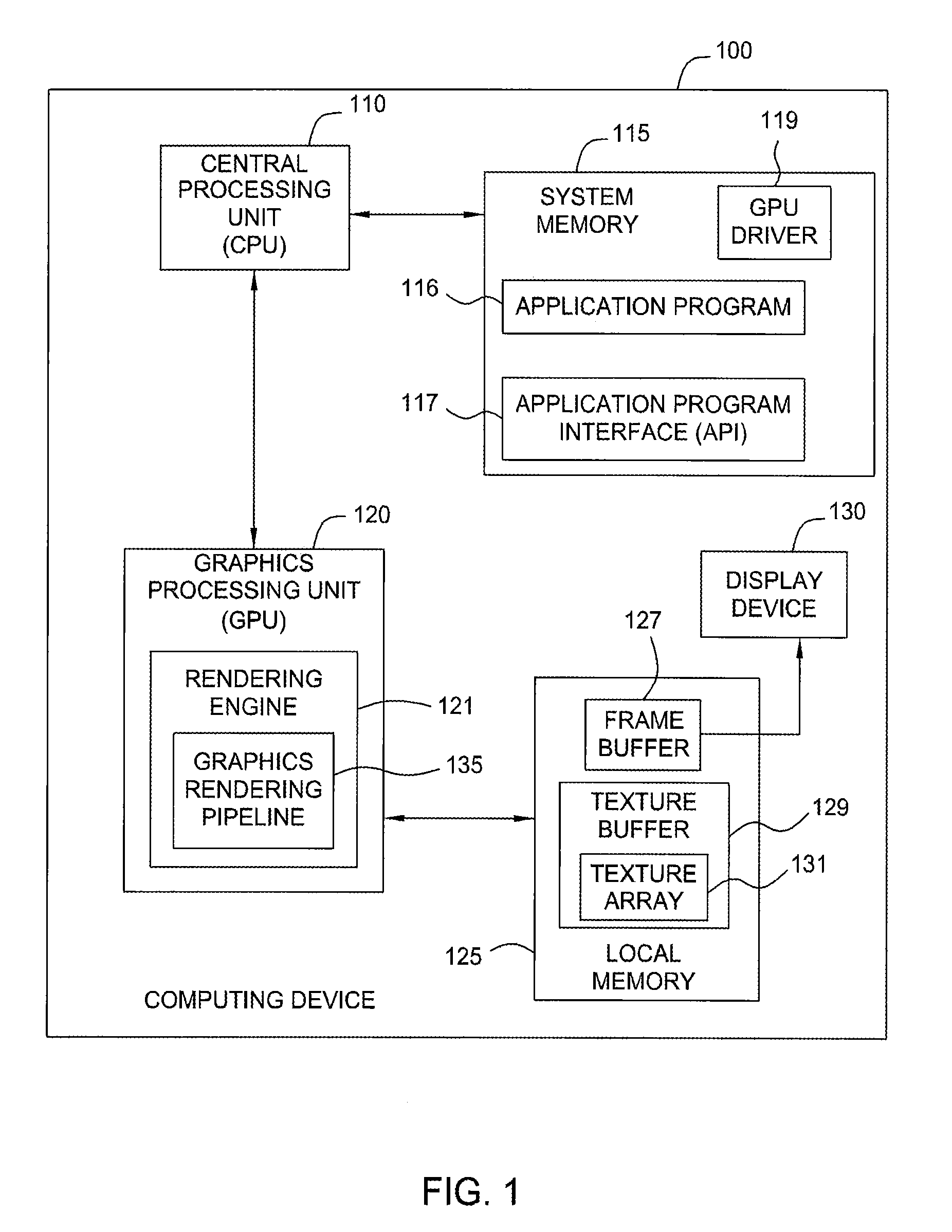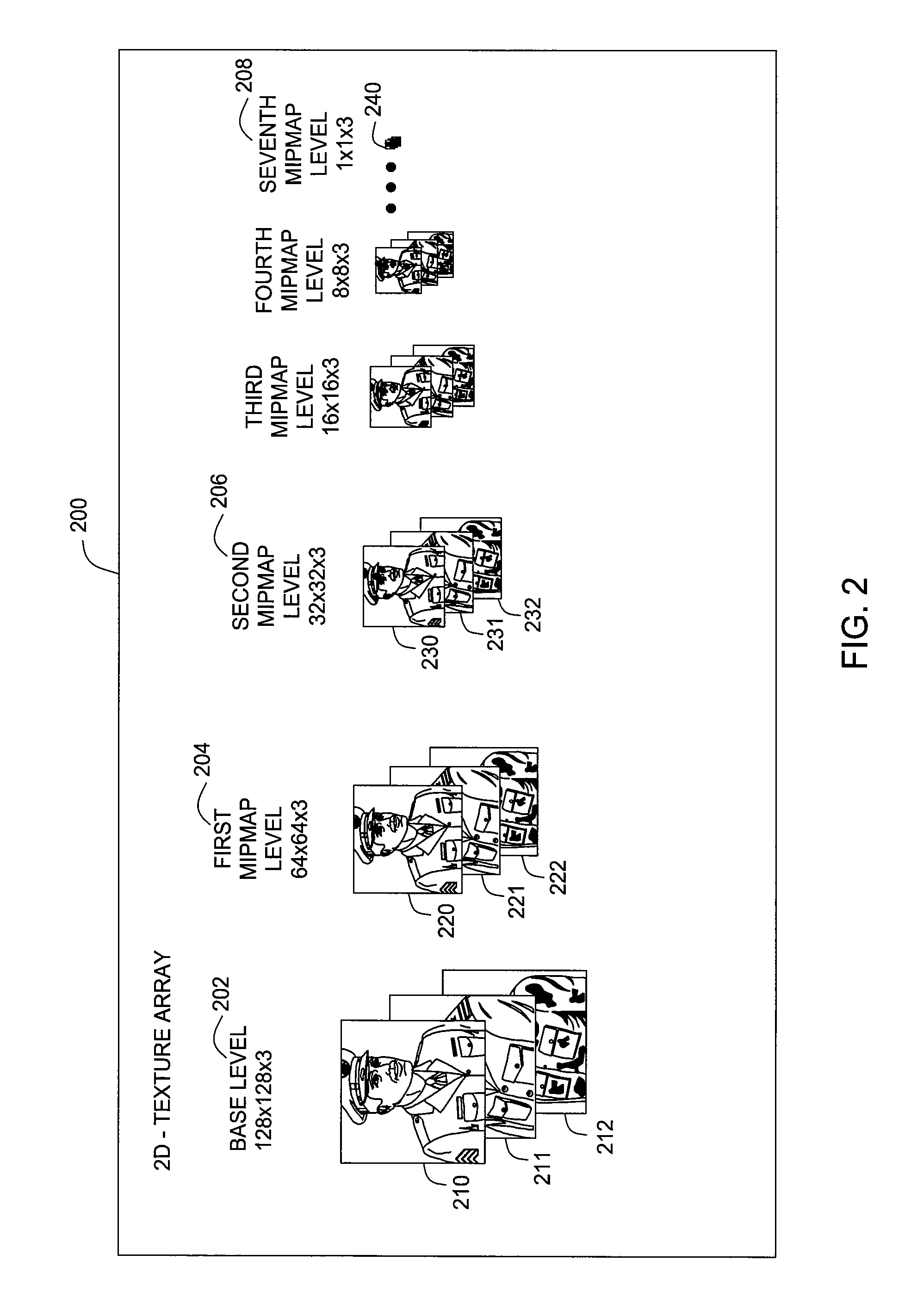Texture arrays in a graphics library
- Summary
- Abstract
- Description
- Claims
- Application Information
AI Technical Summary
Benefits of technology
Problems solved by technology
Method used
Image
Examples
Embodiment Construction
[0017]Embodiments of the invention allow developers of graphics applications to efficiently and effectively manipulate texture arrays using a graphics library. Generally, a texture array is a set of texture images of like format, arranged in layers. From a base image size, a sequence of mipmap reductions may be specified for the each texture map included in a texture array. Each layer of a texture array may be accessed as a single unit in a programmable shader, using a coordinate vector. The coordinate vector specifies which layer (also referred to as a slice) of the texture array to access when performing rendering operations, and each layer of the texture array may be accessed as a distinct texture map. Note, although embodiments of the invention are described herein primarily using exemplary texture arrays of 2D texture maps, one of ordinary skill in the art will readily recognize that the operations described herein for 2D texture arrays may also be used for texture arrays of 1D...
PUM
 Login to View More
Login to View More Abstract
Description
Claims
Application Information
 Login to View More
Login to View More - R&D
- Intellectual Property
- Life Sciences
- Materials
- Tech Scout
- Unparalleled Data Quality
- Higher Quality Content
- 60% Fewer Hallucinations
Browse by: Latest US Patents, China's latest patents, Technical Efficacy Thesaurus, Application Domain, Technology Topic, Popular Technical Reports.
© 2025 PatSnap. All rights reserved.Legal|Privacy policy|Modern Slavery Act Transparency Statement|Sitemap|About US| Contact US: help@patsnap.com



